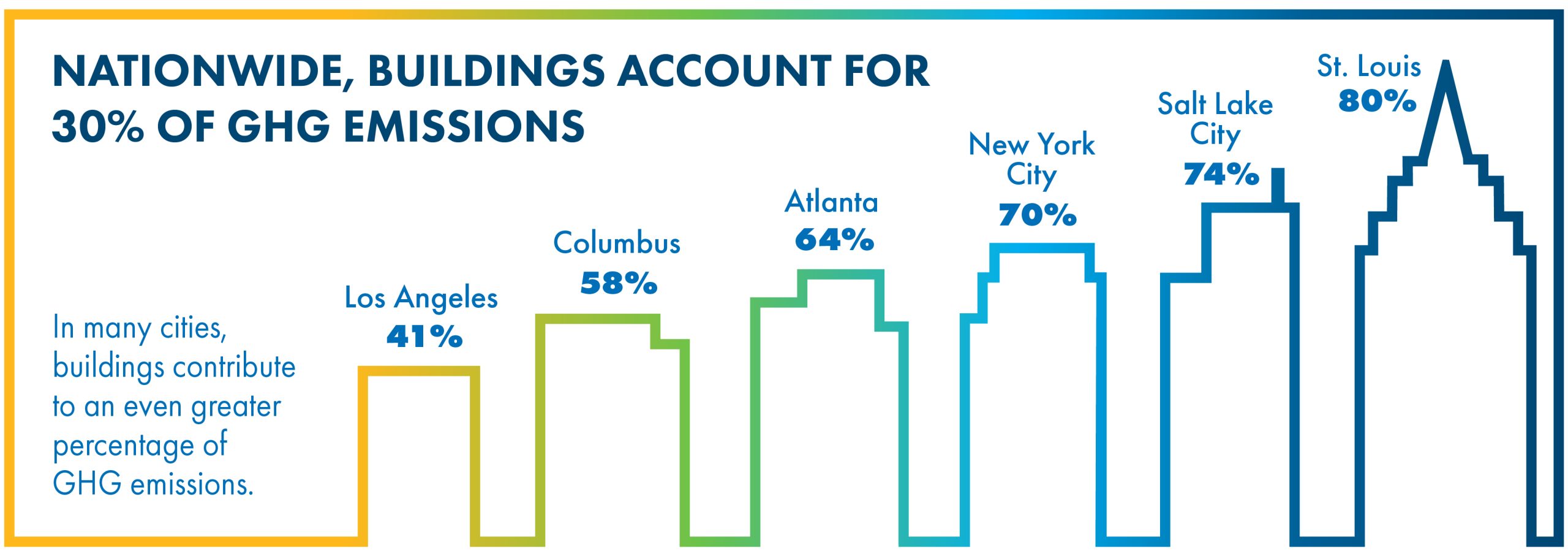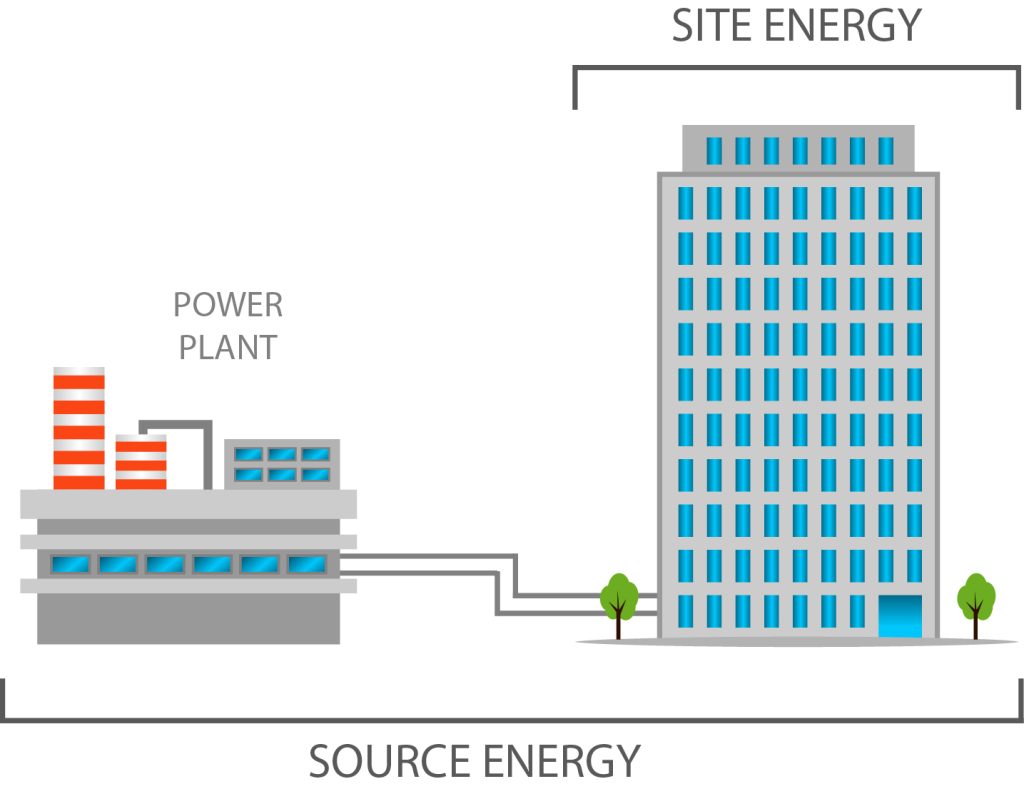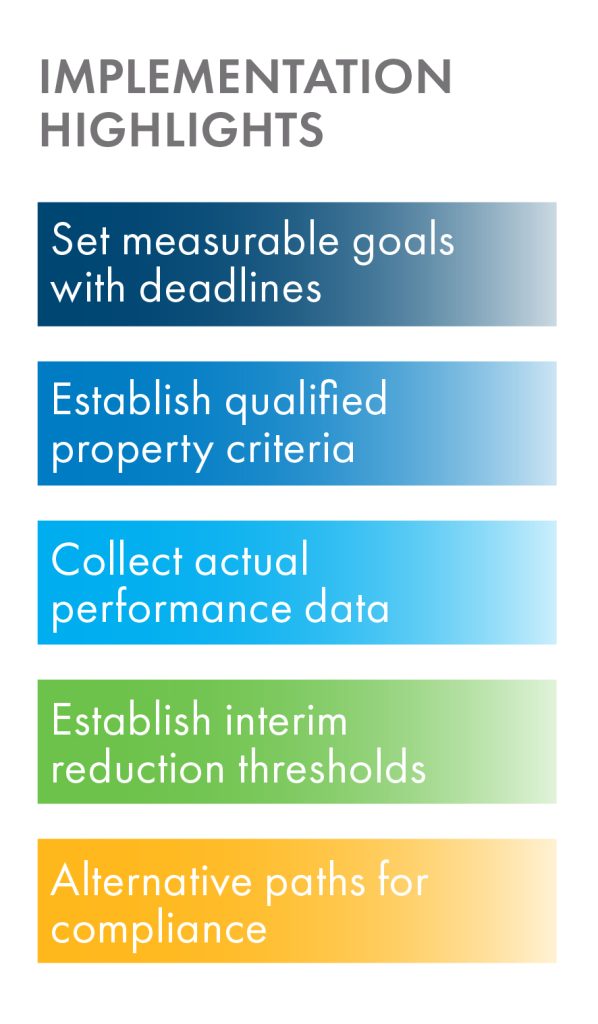Defining Building Performance Standards
First, let’s define Building Performance Standards (BPS). BPS is a set of standards designed to reduce greenhouse gas (GHG) emissions from buildings’ operations by improving energy, gas and water use, and reduce peak demand. These standards become stricter over time, driving continuous, long-term improvement in the building stock and complementing building energy codes.
As more municipalities adopt BPS, the design community faces a risk when a building doesn’t meet the BPS and the owner is either forced to make capital improvements or pay to offset the energy or GHG emissions above the maximum performance threshold. Just designing to minimum energy code compliance may not adequately address this since actual building operation schedules and internal load intensities aren’t taken into account in energy code compliance..
A Brief History
Following the great oil embargo in the ‘70s, the U.S. became more aware of the role that buildings play in energy consumption. In response, ASHRAE issued the first energy-related building code, which gained little traction for about 15 years. The emergence of LEED and the 2030 Challenge (designing buildings not to need fossil fuels to operate by 2030) further fueled the building industry’s interest in energy performance. Despite the increasing rigor of energy codes, the energy performance of the buildings being constructed has not kept pace.
Until now, building design, not operation performance, has generally been reviewed. BPS not only corrects this oversight but also alleviates the technical rigor placed on code officials and the strain on resources. Building Performance Standards require buildings to meet GHG emission or energy performance targets by specific deadlines. Existing buildings are included in a way that design-based energy codes overlook.

More than 600 U.S. local-level jurisdictions have adopted GHG emissions policies and GHG reduction targets. Nationwide, buildings account for 30% of these emissions. In many cities across the country, it’s much higher. In Orlando, where TLC is headquartered, up to 70% of GHG emissions are attributed to buildings.
Source Energy vs Site Energy

Site energy is the amount of energy used by the building measured at the building or site boundary. Source energy is site energy plus the energy used to get that energy to the building or site boundary, which includes extraction, processing, transportation, conversion and transmission energy. This makes source energy more directly related to GHG emissions. Since energy supplied by a utility is outside the control of a building owner/operator it might seem “unfair” to have the building owner held responsible for source energy consumption.
BPS Benefits for Building Owners
There is a compelling list of benefits for building owners to explore implementing BPS and ultimately has contributed to the adoption of BPS in 50+ local and state municipalities. Quite possibly at the top of this list is costly impact fees and/or fines that can be avoided. Lower operating costs and improved indoor air quality are among the major benefits. Additionally, there is an opportunity for more robust resiliency.

Implementing Building Performance Standards

It starts by setting time-limited, measurable goals and moves on to qualifying properties. This involves setting up criteria and timelines, perhaps focusing on commercial buildings of a certain size, progressing to residential and smaller buildings at a later stage. Then performance data needs to be collected from qualified properties by developing benchmarks or using ENERGY STAR® ratings. Energy audits identify opportunities for improvement. Subsequently, an interim reduction threshold is established using a tiered approach with milestones of measures and timeframes. Finally, allowances for alternative paths for compliance including paying for offsets and fees.
The objective of this article is to help those unfamiliar with the concept of Building Performance Standards develop a working knowledge. For a more comprehensive look into BPS and related subjects, please see our Continuing Education list of AIA-certified courses and submit a request. TLC’s Peak Institute and energy experts are eager to provide strategies and solutions to help you reach your goals.


